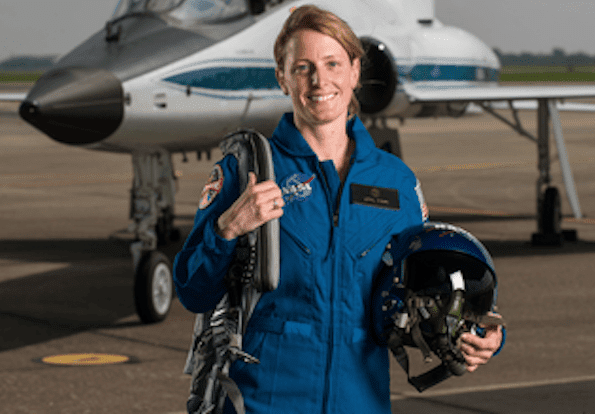Last week six women – including O’Hara – and seven men graduated from NASA’s hugely popular two-year Artemis space program at the Johnson Space Centre in Huston Texas. It’s one of the most competitive training programs in the world: in 2017 it received around 18,300 applications and of the 13 accepted applications, almost half were women.
While it is astonishing that it has taken more than half a century for women to set foot on the moon, NASA appears committed to having a gender balance in its education programs in the future.
In late 2019, Women’s Agenda reported that NASA’s director for technology and advancements, Dr Christyl Johnson, said sending a woman to the moon by 2024 would involve embracing diversity at all levels.
“The best way for us to innovate is to get anybody and everybody to the table,” she said. “Find someone who is not in your field.
“When you have people who look alike, who have the same background experience, who hang out after work, they start thinking alike.”
Victoria Ugalde from NASA’s office of STEM Engagement has publicly stated that NASA will land the first woman and next man on the surface of the Moon by 2024 under the Artemis program. Other first-time space missions are also a possibility, she says.
“After graduation, the candidates will become eligible for spaceflight, including assignments to the International Space Station, Artemis missions to the Moon and, ultimately, missions to Mars,” Ugalde said.
In O’Hara’s case – sheer hard work and determination is beginning to see her dream become a reality.
From Sugar Land, Texas, O’Hara grew up very close to the NASA centre and from a young age dreamt of becoming an astronaut. It took her three attempts to get accepted into the NASA program. As a teenager, she attended Johnson headquarters to watch space station mission debriefs and she went on to study aerospace engineering at the University of Kansas.
“I started applying once I was old enough — actually, before I was old enough,” O’Hara notes on the NASA website. “The first time I applied, I didn’t meet the basic qualifications.”
It took about 18 months for NASA to contact her for an interview after her third interview. In the meantime, O’Hara did a multitude of things that eventually made it impossible for NASA to deny her entry into the highly-competitive program.
One of the keys to O’Hara’s success has been her desire to say yes to as many opportunities relating to her field as possible over the years. Through college, she worked with the Space Grant Consortium, then participated in NASA’s KC-135 Reduced Gravity Student Flight Opportunities Program. She also attended a NASA 10-week residential summer program where students are invited to challenge research and development projects alongside NASA mentors. Eventually she completed an internship at NASA’s Jet Propulsion Laboratory in Pasadena, California.
After completing her undergraduate degree, O’Hara worked as a project engineer at Rocketplane. She later went back to university and completed her master’s degree in aeronautics and astronautics. O’Hara began contributing to a major upgrade of the human-occupied submarine Alvin from 2009 to 2013, earning her Naval certification. She also worked as a design engineer in aerospace and later a research engineer specialising in deep ocean submersibles and robots.
“I was pretty fortunate to get to do a lot of different things,” O’Hara said. “Enjoy the whole journey of growing up, figuring out what it is that you like to do and exploring all different kinds of things.”



